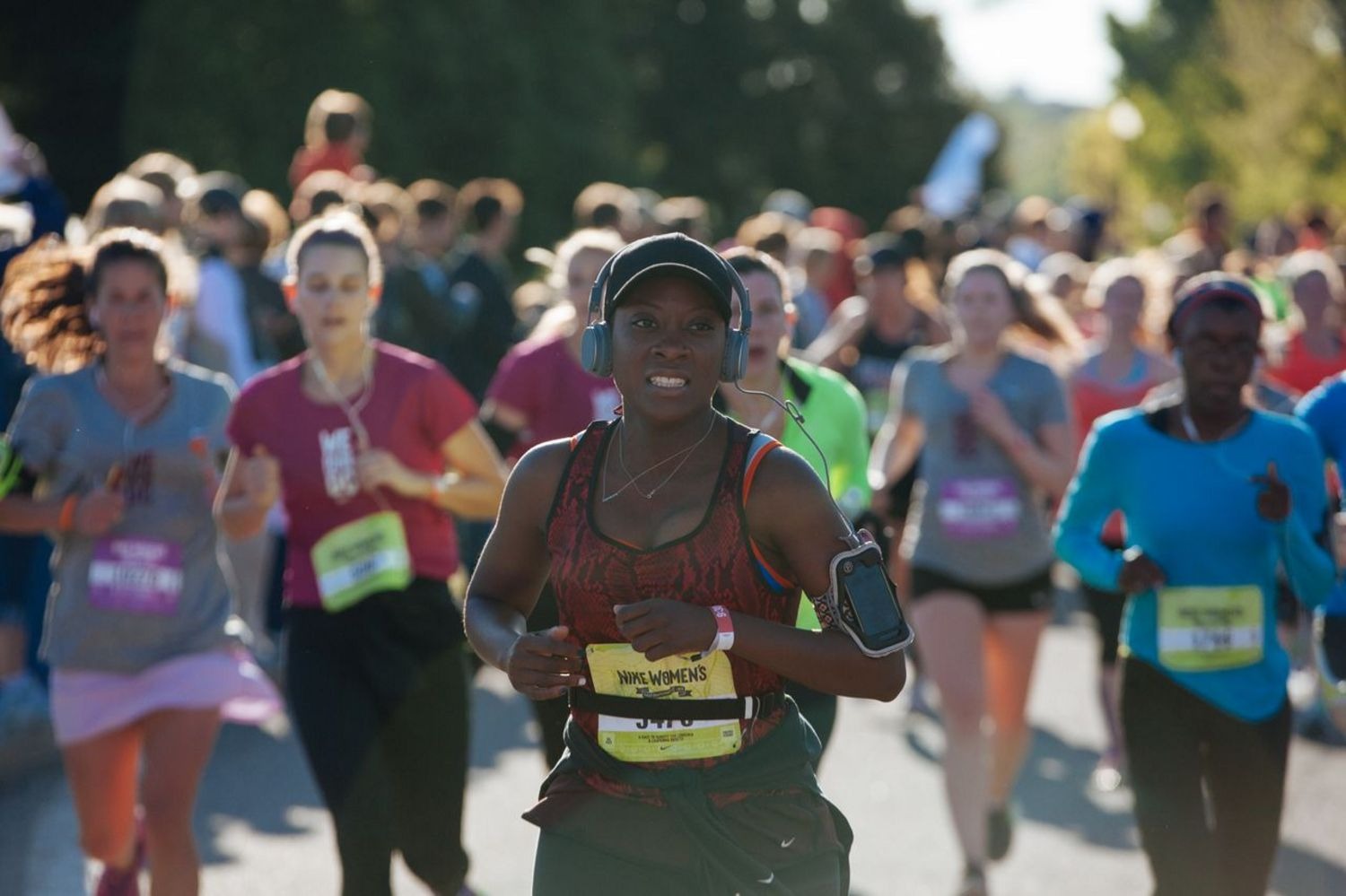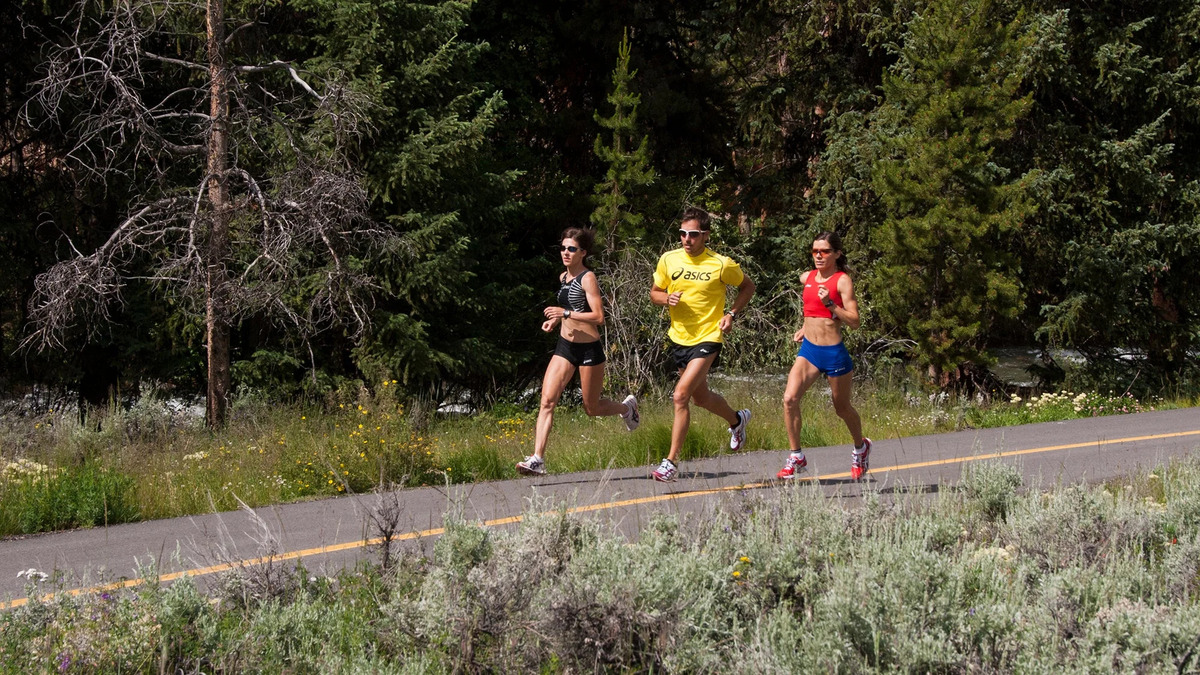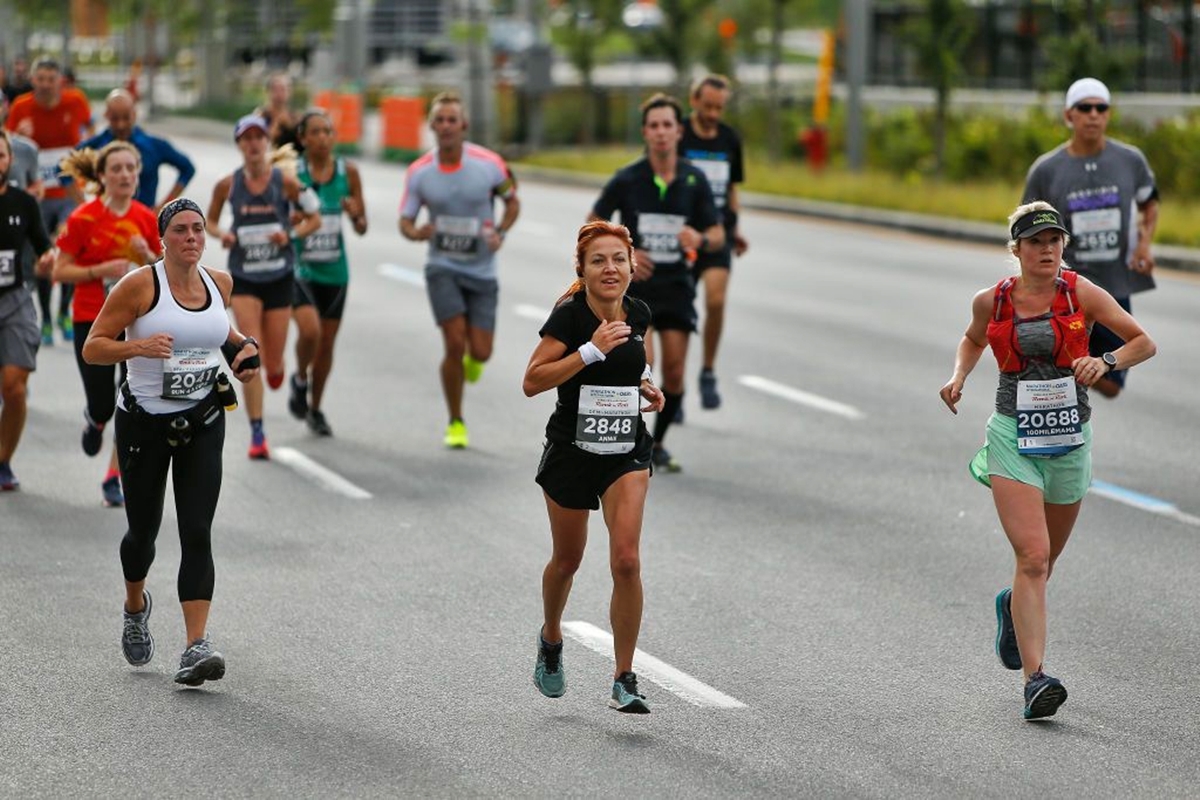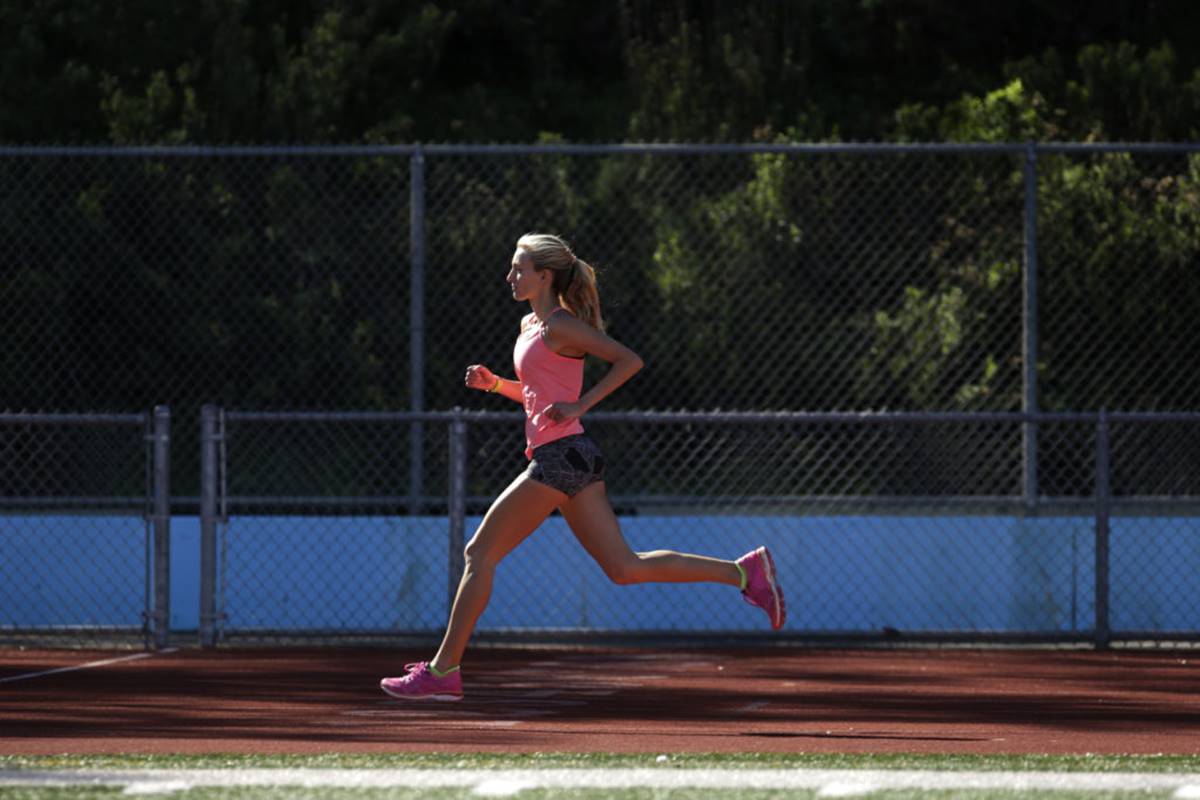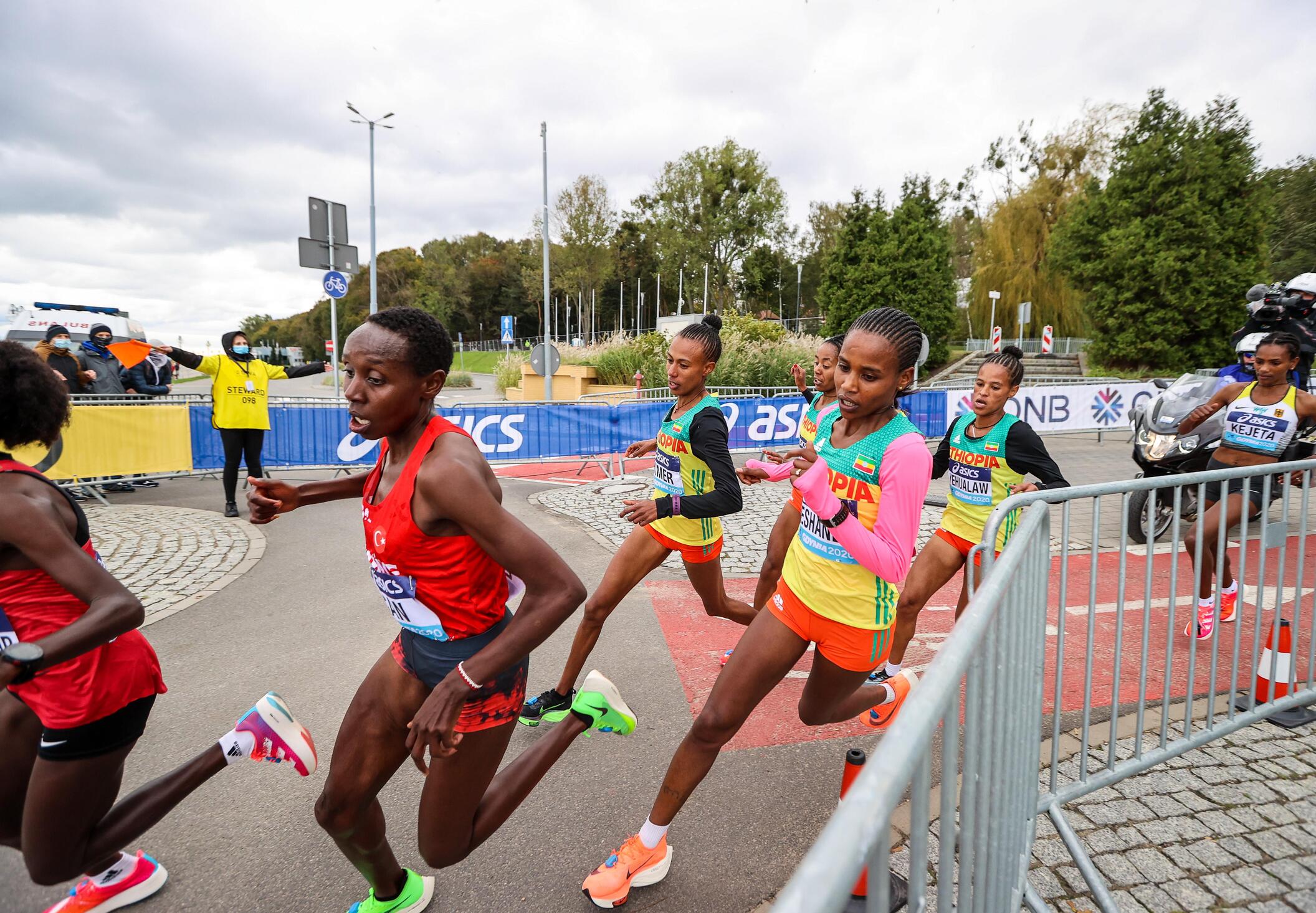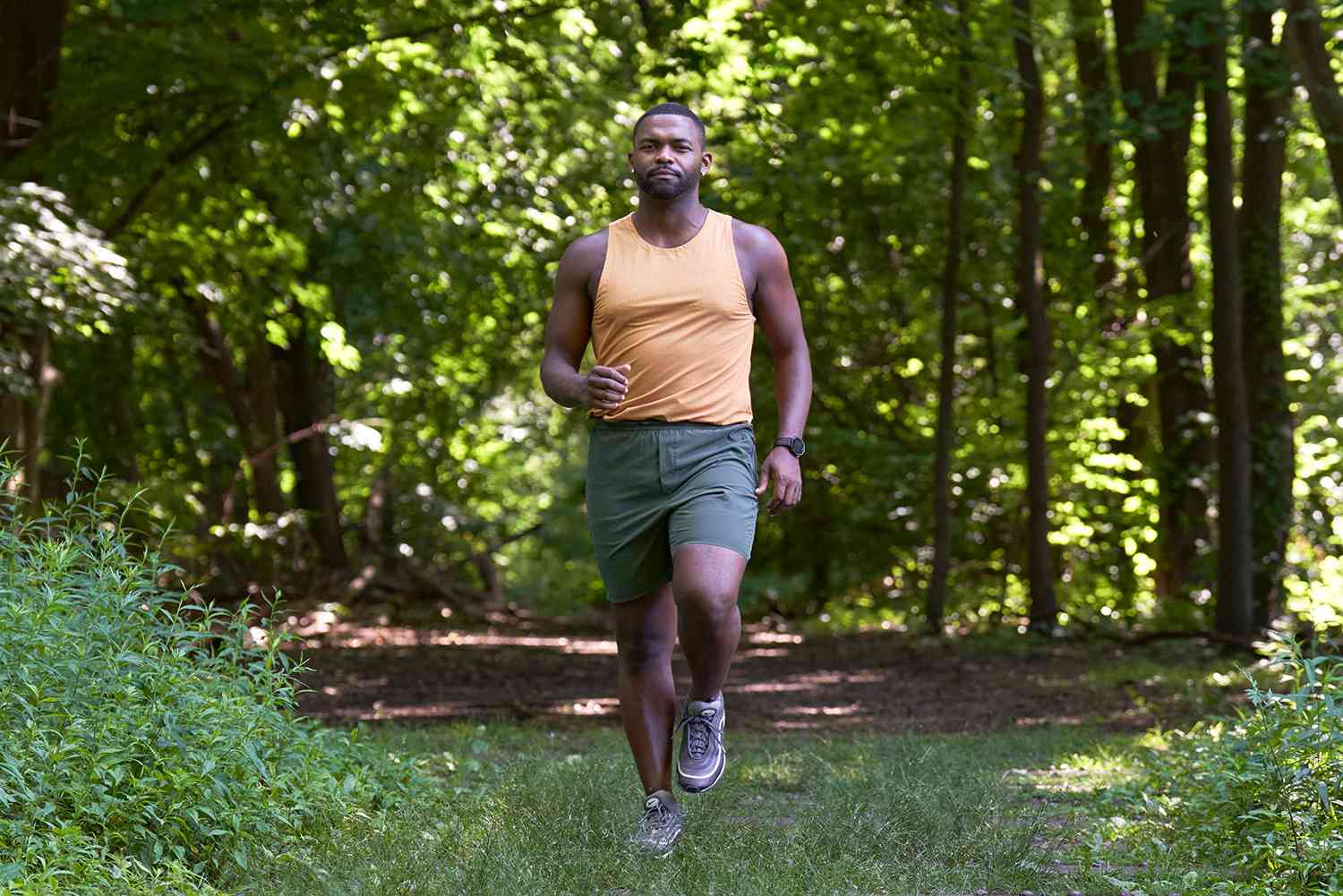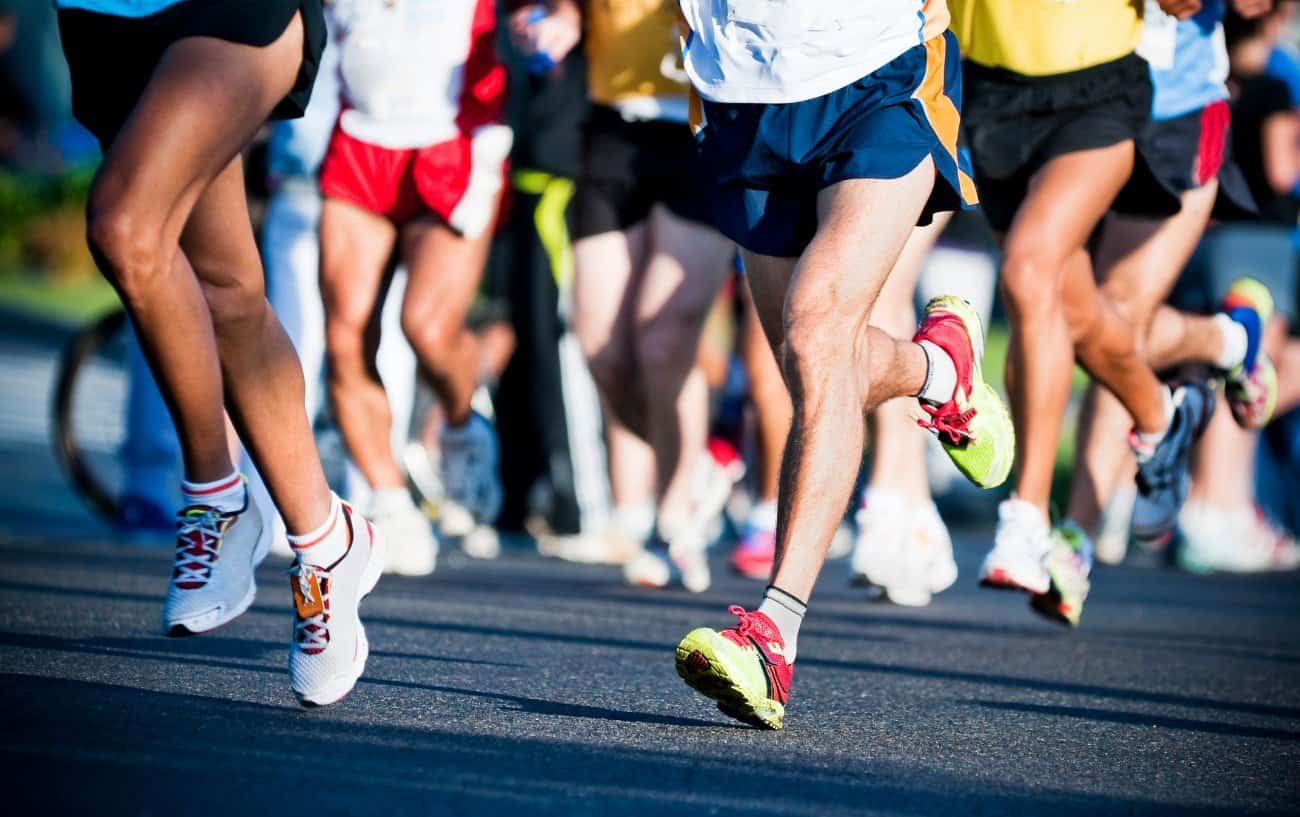Home>Misc>Featured>What To Do To Recover After A Half Marathon
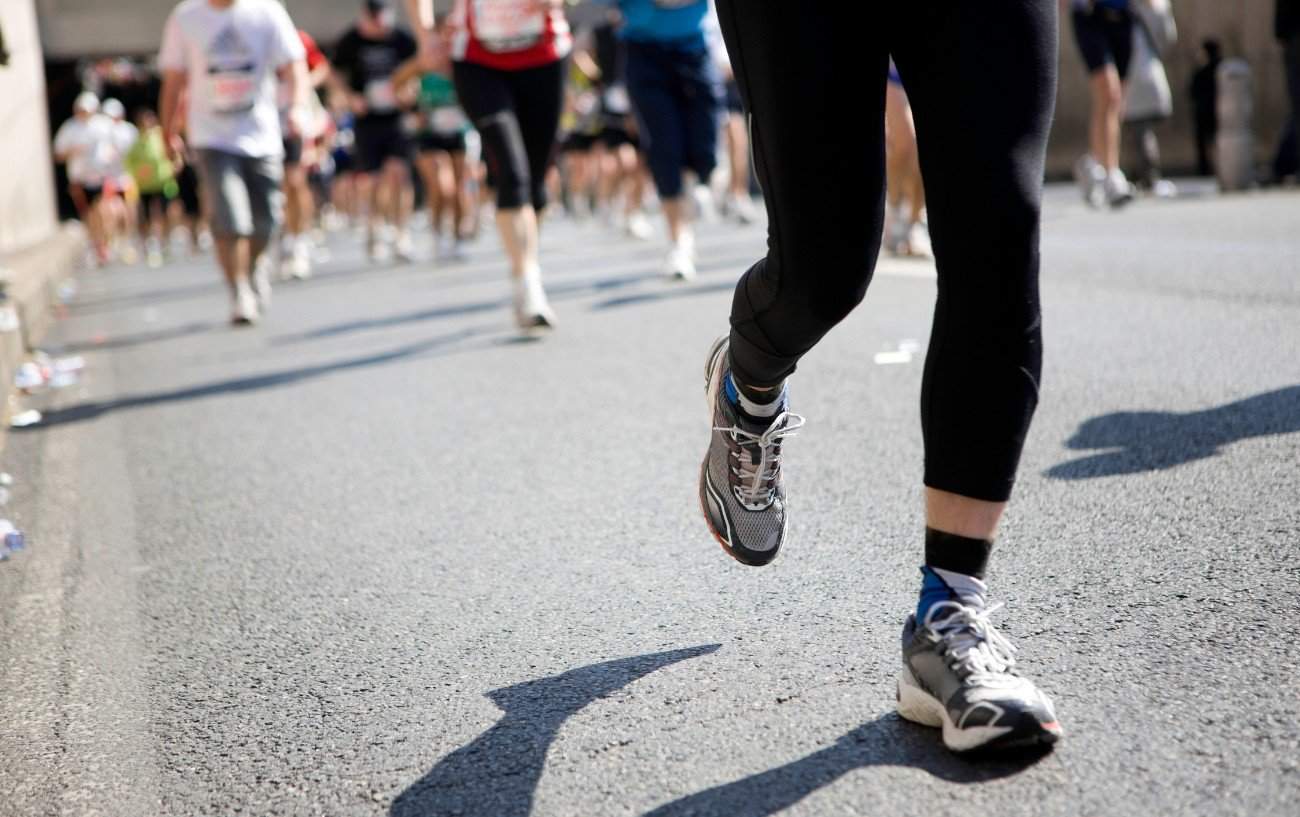

Featured
What To Do To Recover After A Half Marathon
Modified: January 2, 2024
Discover the best ways to recover after completing a half marathon including rest, hydration, and proper nutrition. Learn how to bounce back quickly from the grueling race. Featured tips and expert advice.
Introduction
Completing a half marathon is a significant accomplishment that requires months of training and preparation. Whether it is your first half marathon or you are a seasoned runner, taking the time to properly recover after the race is essential for your overall well-being and future performance. After pushing your body to its limits, it is crucial to allow it adequate time and care to heal and rejuvenate.
In this article, we will explore various strategies and tips to help you recover effectively after a half marathon. From rest and hydration to stretching and foam rolling, we will discuss the steps you can take to promote healing, reduce muscle soreness, and prevent injuries. By following these recommendations, you can bounce back faster and set yourself up for success in future races.
It is important to note that recovery is not a one-size-fits-all process. Each runner’s body is unique, and the duration and intensity of recovery may vary. Listen to your body, pay attention to any signs of excessive fatigue or pain, and adjust your recovery plan accordingly. Remember, the goal is to give your body the necessary time to repair itself and come back stronger.
So, if you recently crossed the finish line of a half marathon and are wondering what to do next, keep reading to discover the top recovery strategies that will help you get back on your feet faster and with minimal discomfort. Let’s dive in!
Rest and Recover
After the demanding physical exertion of a half marathon, your body needs time to recover and recharge. Rest plays a vital role in the recovery process and is essential for repairing damaged muscle fibers, replenishing energy stores, and reducing the risk of injury. Here are some key strategies to optimize your rest and recovery:
- Take it easy: Give yourself at least a few days of complete rest after the race. Avoid any high-impact activities and allow your body to heal naturally.
- Elevate your legs: Lying down with your legs raised helps improve blood circulation and reduces swelling in your legs. This simple practice can aid in faster recovery.
- Massage and compression: Consider getting a massage or using compression socks to alleviate muscle soreness and promote blood flow to your legs. These techniques can aid in reducing inflammation and promoting recovery.
Rest and recovery are just as important as the race itself. Resist the temptation to immediately jump back into intense training or other activities. Give your body the time it needs to heal and rebuild so that you can come back stronger in your future endeavors.
Hydrate and Refuel
Proper hydration and nutrition play a crucial role in your post-half marathon recovery. During the race, your body loses a significant amount of fluid through sweat, and your glycogen stores become depleted. To facilitate recovery and optimize muscle repair, it is important to hydrate and refuel adequately. Here are some tips to help you in this process:
- Replenish fluids: Drink plenty of water and electrolyte-rich fluids to rehydrate your body. Aim to drink at least 16-20 ounces of water within the first few hours after the race. Continue to sip water throughout the day to maintain hydration levels.
- Replace electrolytes: Along with water, replenish electrolytes that were lost during the race. Electrolyte-rich sports drinks or coconut water can help restore the balance of essential minerals such as sodium, potassium, and magnesium.
- Eat a balanced meal: Consuming a balanced meal within a couple of hours post-race is essential to replenish glycogen stores and aid in muscle recovery. Include a good balance of carbohydrates, proteins, and healthy fats to promote optimal recovery.
- Snack strategically: In addition to your main meal, have nutritious snacks throughout the day. Foods rich in protein, such as Greek yogurt, nuts, or lean meats, help repair and rebuild muscle. Fruits, vegetables, and whole grains provide necessary vitamins, minerals, and antioxidants to support the recovery process.
Remember, everyone’s nutritional needs may vary, so listen to your body and provide it with the fuel it needs to recover effectively. Proper hydration and nutrition will help speed up your recovery process, reduce muscle soreness, and replenish energy levels.
Stretch and Foam Roll
Stretching and using a foam roller are essential components of post-half marathon recovery. These practices can help alleviate muscle tightness, improve flexibility, and reduce the risk of injury. Here are some tips to effectively stretch and use a foam roller:
- Dynamic stretching: Perform gentle dynamic stretches before your static stretches to warm up your muscles. Dynamic stretches involve moving parts of your body through a full range of motion without holding any position for an extended period.
- Static stretching: After the dynamic warm-up, perform static stretches to enhance flexibility and relieve muscle tension. Focus on targeting major muscle groups such as calves, hamstrings, quadriceps, hip flexors, and glutes. Hold each stretch for at least 30 seconds.
- Foam rolling: Utilize a foam roller to perform self-myofascial release. Roll over different muscle groups, applying steady and controlled pressure. This technique helps break up adhesions and knots in the muscle tissue, improving blood flow and reducing muscle soreness.
- Take it slow: While stretching and foam rolling can be uncomfortable at times, it should not be painful. Listen to your body and stay within a comfortable range of motion without pushing too hard.
Incorporating regular stretching and foam rolling into your post-race recovery routine will not only enhance your flexibility and mobility but also promote faster healing and reduce muscle soreness. Make it a part of your routine to stretch and foam roll after every run, not just after a half marathon.
Take Ice Baths
Ice baths, also known as cold-water immersion, have long been used by athletes as a popular recovery method. Taking an ice bath after a half marathon can help reduce inflammation, soothe muscle soreness, and aid in recovery. Here’s what you need to know about incorporating ice baths into your post-race routine:
- Timing is key: Take an ice bath as soon as possible after your race, ideally within 30 minutes to an hour. This allows your body to capitalize on the benefits of cold-water immersion when the muscles are still warm and inflamed.
- Fill the tub with cold water: Fill your bathtub with cold water, aiming for a temperature around 50 to 59 degrees Fahrenheit (10 to 15 degrees Celsius). You can add ice cubes to lower the temperature if desired, but be cautious not to make it too cold.
- Immerse your body: Get into the tub and immerse your lower body up to your waist. If you can tolerate it, you can also submerge your upper body. Stay in the ice bath for 10 to 15 minutes.
- Keep moving if possible: While in the ice bath, gently move your legs and perform ankle pumps to enhance blood circulation. This can help flush out metabolic waste products and promote faster recovery.
- Gradually increase exposure: If you are new to ice baths, start with shorter durations and gradually increase the time as your body adapts.
While ice baths may not be the most pleasant experience, they can be highly effective in reducing post-race inflammation and promoting muscle recovery. If you find it too intense, you can also consider using ice packs or cold compresses on specific sore areas of your body.
It is important to note that ice baths are not suitable for everyone. If you have any medical conditions, such as Raynaud’s disease or circulatory disorders, or if you are pregnant, consult with a healthcare professional before incorporating ice baths into your recovery routine.
Get Adequate Sleep
Sleep is a crucial component of post-half marathon recovery. During sleep, your body undergoes important restorative processes that help repair damaged tissues, regulate hormones, and support overall health and well-being. Here are some tips to ensure you get adequate sleep for optimal recovery:
- Stick to a routine: Establish a consistent sleep schedule by going to bed and waking up at the same time every day. This helps regulate your body’s internal clock and promotes better quality sleep.
- Create a sleep-friendly environment: Make your bedroom a comfortable, dark, and quiet space. Use curtains or blinds to block out any external light and consider using earplugs or a white noise machine to minimize disturbances.
- Avoid screens before bed: The blue light emitted by electronic devices can interfere with your sleep. Avoid using smartphones, tablets, or laptops at least an hour before bedtime to allow your body to wind down naturally.
- Practice relaxation techniques: Engage in calming activities before bed, such as reading a book, taking a warm bath, or practicing deep breathing exercises. These relaxation techniques can help signal to your body that it’s time to sleep.
- Avoid stimulants: Limit your caffeine intake, especially in the afternoon and evening. Caffeine can disrupt your sleep patterns and make it harder to fall asleep and stay asleep.
- Manage stress: High levels of stress can negatively impact your sleep quality. Find healthy ways to manage stress, such as practicing mindfulness meditation or engaging in stress-relieving activities like yoga or walking.
Getting enough sleep is essential for your body’s recovery process. Aim for seven to nine hours of quality sleep each night to support muscle repair, mental restoration, and overall recovery after the demanding physical exertion of a half marathon.
Cross-Train and Strengthen
While rest is important, it doesn’t mean you have to be completely sedentary during your post-half marathon recovery. Engaging in cross-training activities and strength exercises can actually aid in your recovery process and improve your overall performance. Here’s how you can incorporate cross-training and strengthening into your routine:
- Low-impact activities: Opt for low-impact exercises like swimming, cycling, or using an elliptical machine. These activities provide cardiovascular benefits without putting excessive stress on your joints and muscles.
- Focus on weak areas: Identify any muscle imbalances or weak areas in your body and incorporate exercises that specifically target them. This will help improve overall strength and prevent future injuries.
- Core strengthening: A strong core provides stability and helps maintain proper running form. Include exercises such as planks, bridges, and Russian twists to strengthen your abdominal and lower back muscles.
- Resistance training: Incorporate resistance training exercises using weights, resistance bands, or bodyweight to build strength and improve muscle tone. Focus on a variety of exercises that target different muscle groups throughout your body.
- Listen to your body: While it’s important to stay active, be mindful of how your body is feeling and avoid overexertion. Take rest days as needed and adjust your intensity and duration based on your recovery progress.
Cross-training and strength exercises not only promote recovery but also help to prevent overuse injuries and enhance your overall athletic performance. Remember to gradually increase the intensity and duration of your cross-training activities as you feel stronger and more recovered.
Listen to Your Body
One of the most important aspects of post-half marathon recovery is listening to your body. Every individual is unique, and your body will provide you with the signals and cues you need to guide your recovery process. Here’s how to listen to your body and give it what it needs:
- Pay attention to pain: It’s normal to experience some muscle soreness and fatigue after a half marathon. However, if you’re experiencing sharp or intense pain that persists or worsens, it may be a sign of an injury. Don’t ignore these signs and seek appropriate medical attention if needed.
- Take rest days: Rest is crucial for recovery. While it’s essential to stay active, it’s equally important to give your body adequate time to heal and rebuild. Incorporate rest days into your post-race training plan and adjust the intensity and duration of your workouts based on how your body feels.
- Address fatigue: Post-race fatigue is normal, but if you find yourself constantly tired or struggling with low energy levels, it may be a sign that you need more rest. Prioritize sleep, eat nutritious foods, and consider incorporating relaxation techniques such as meditation or gentle yoga to recharge both your body and mind.
- Modify your training: If you feel exceptionally tired or sore, it may be necessary to modify your training plan or decrease the intensity of your workouts. Listen to your body’s signals and make adjustments as needed to avoid overtraining and potential injuries.
- Stay in tune with your emotions: Physical recovery goes hand in hand with emotional well-being. Pay attention to your mental state and take care of your emotional health. Engage in activities that bring you joy and reduce stress, such as spending time with loved ones, practicing mindfulness, or pursuing hobbies that you enjoy.
Remember, recovery is a holistic process that encompasses both physical and mental aspects. By listening to your body, you can ensure that you’re providing it with the care and support it needs for a successful and sustainable recovery.
Gradually Resume Running
As the days pass and you begin to recover from your half marathon, you may feel eager to get back to running. However, it’s vital to approach the process of resuming running with caution and gradually increase your mileage and intensity. Here are some tips to help you ease back into running:
- Start with short, easy runs: Begin by going for short, easy runs that feel comfortable and sustainable. Focus on maintaining good form and listening to your body’s cues.
- Alternate running and walking: Incorporate a run-walk strategy during your initial runs to minimize the impact on your recovering muscles and joints. Gradually decrease the walking intervals as you regain strength and stamina.
- Monitor your body’s response: Pay attention to how your body responds during and after each run. Be mindful of any pain or discomfort and adjust your running routine accordingly.
- Incorporate cross-training: Continue incorporating cross-training activities, such as cycling or swimming, to maintain cardiovascular fitness while reducing the impact on your legs.
- Listen to your body: If you experience any persistent pain or excessive fatigue, take a step back and allow yourself more time to recover. Pushing through discomfort can lead to further injury and setbacks.
- Gradually increase mileage: Slowly increase your mileage each week, focusing on adding no more than 10% to your total distance. This gradual increase will help avoid overtraining and minimize the risk of injury.
- Include rest days: Allow for adequate rest days between running sessions. This will give your body time to adapt and recover from the stress of running.
Remember, your recovery process may take longer than expected, and it’s important to be patient with yourself. Everyone’s recovery timeline is different, so listen to your body’s needs and adapt your running routine accordingly. The goal is to progress slowly and safely to build a strong foundation for future training and races.
Seek Professional Help if Needed
If you’re experiencing persistent pain, significant discomfort, or any concerns during your post-half marathon recovery, it’s important to seek professional help. Consulting with a healthcare professional or sports medicine specialist can provide valuable guidance and assistance in your recovery journey. Here are some instances where seeking professional help may be necessary:
- Injury assessment: If you’re experiencing persistent pain or suspect you may have an injury, it’s crucial to consult with a healthcare professional for a proper assessment. They can help diagnose the issue and provide appropriate treatment options.
- Physical therapy: If you’re struggling with muscle imbalances, mobility issues, or recurring injuries, a physical therapist can create a personalized plan to address these concerns. They can provide exercises, stretches, and techniques to aid in your recovery and prevent future injuries.
- Sports massage therapist: Seeking the assistance of a professional sports massage therapist can help alleviate muscle tension, reduce soreness, and improve circulation. They can target specific areas of concern and use their expertise to aid in your recovery process.
- Sports nutritionist: If you’re unsure about your post-race nutrition or have specific dietary concerns, consulting with a sports nutritionist can help you optimize your recovery through proper fueling and nutritional guidance.
- Running coach: A running coach can provide guidance on gradually returning to training, adjusting your mileage and intensity, and ensuring you’re on the right track for future races. They can help tailor a training plan that suits your specific needs and goals.
Remember, seeking professional help when needed can help accelerate your recovery, prevent further injury, and provide you with the support and expertise necessary to optimize your post-half marathon recovery process. Don’t hesitate to reach out to trusted professionals who can offer guidance and assistance tailored to your specific situation.
Conclusion
Crossing the finish line of a half marathon is an incredible achievement, but the journey doesn’t end there. Proper recovery is essential to ensure that you heal, recharge, and come back stronger for future races. By following the strategies outlined in this article, you can optimize your post-half marathon recovery and set yourself up for success. Rest and allow your body to heal, hydrate and refuel to replenish vital nutrients, and incorporate stretching and foam rolling to reduce muscle soreness. Ice baths can aid in inflammation reduction, while getting adequate sleep promotes overall recovery. Don’t forget to listen to your body and gradually resume running, and seek professional help if you experience persistent pain or injury concerns.
Remember, every runner’s recovery is unique. Pay attention to your body’s cues and adjust your recovery plan accordingly. Be patient with yourself and trust the process. Backed by a comprehensive recovery plan, you’ll be ready to tackle new challenges and conquer future half marathons with renewed energy and strength.
